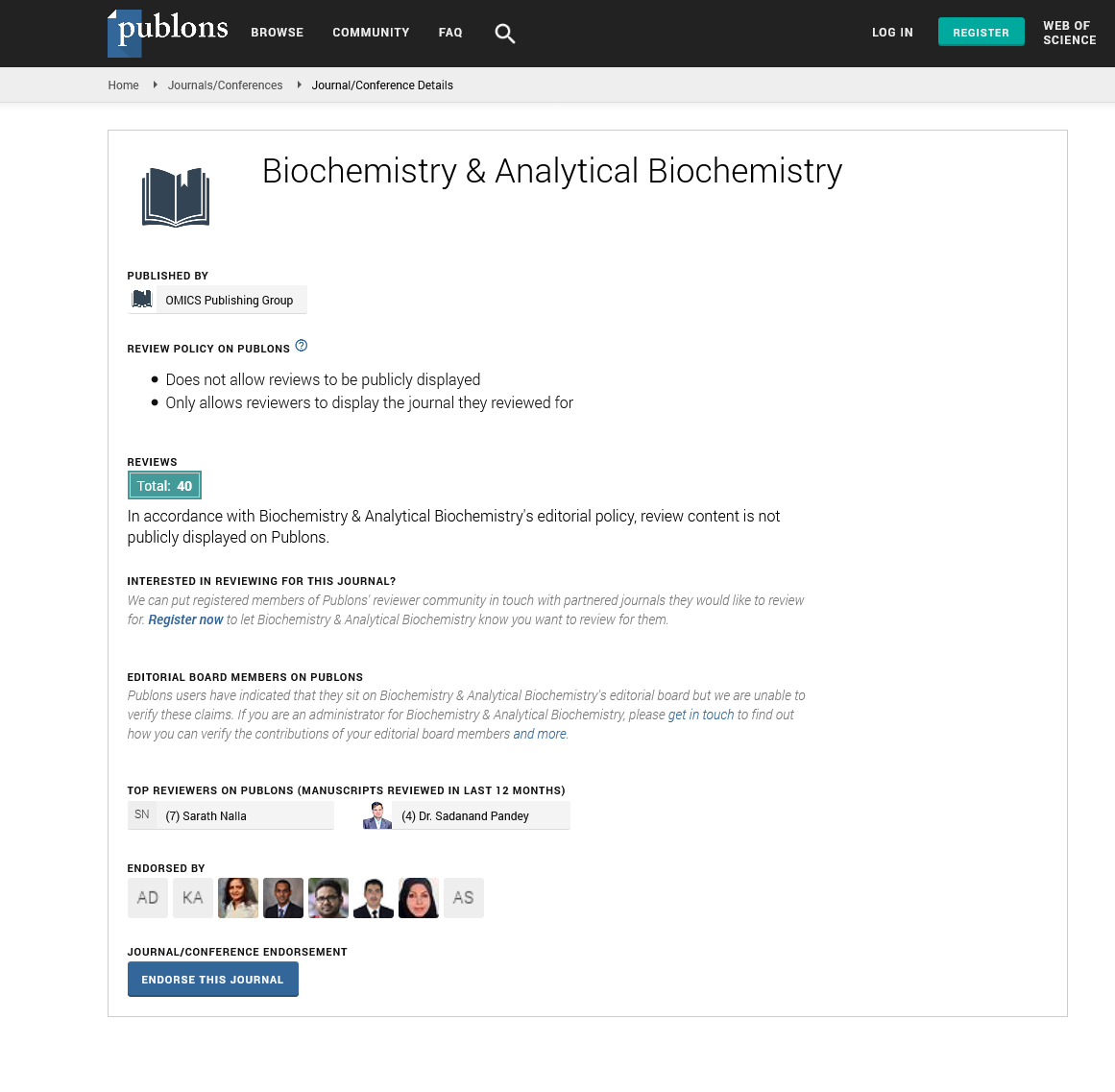Indexed In
- Open J Gate
- Genamics JournalSeek
- ResearchBible
- RefSeek
- Directory of Research Journal Indexing (DRJI)
- Hamdard University
- EBSCO A-Z
- OCLC- WorldCat
- Scholarsteer
- Publons
- MIAR
- Euro Pub
- Google Scholar
Useful Links
Share This Page
Journal Flyer

Open Access Journals
- Agri and Aquaculture
- Biochemistry
- Bioinformatics & Systems Biology
- Business & Management
- Chemistry
- Clinical Sciences
- Engineering
- Food & Nutrition
- General Science
- Genetics & Molecular Biology
- Immunology & Microbiology
- Medical Sciences
- Neuroscience & Psychology
- Nursing & Health Care
- Pharmaceutical Sciences
Commentary - (2025) Volume 14, Issue 1
The Glycocode Enigma: Glycosylation Deserves Center Stage in Protein Biology
Jonathan Elmore*Received: 03-May-2025, Manuscript No. BABCR-25-28835; Editor assigned: 05-Mar-2025, Pre QC No. BABCR-25-28835 (PQ); Reviewed: 19-Mar-2025, QC No. BABCR-25-28835; Revised: 26-Mar-2025, Manuscript No. BABCR-25-28835 (R); Published: 02-Apr-2025, DOI: 10.35248/2161-1009.25.14.568
Description
For decades, the field of protein biology has prioritized transcriptional regulation, sequence variability and protein folding as the central pillars guiding structure-function relationships. However, an often-overlooked biochemical phenomenon, glycosylation, presents itself not merely as a post-translational afterthought but as a highly regulated, dynamic layer of functional diversification that can no longer be relegated to the sidelines of molecular biology.
Glycosylation, particularly N-linked and O-linked forms, affects nearly every secreted or membrane-bound protein. Despite its ubiquity, glycosylation has suffered from a historical underrepresentation in mainstream research, likely due to its structural complexity and analytical challenges. The diverse repertoire of glycans, coupled with the context-specificity of glycosyltransferase and glycosidase activities, renders the “glycocode” a biochemical language far more intricate than the genetic code itself.
Recent advancements in mass spectrometry and glycan microarrays have begun to unravel the subtleties of this code. Specific glycosylation patterns now appear to influence immune cell activation, tumor metastasis and even neuronal development. For example, aberrant sialylation has been implicated in immune evasion mechanisms in carcinomas, providing malignant cells with a stealth-like phenotype against Natural Killer (NK) cells and cytotoxic T lymphocytes. This realization casts glycosylation not as a structural footnote but as a strategic tool exploited by both physiological and pathological processes.
Moreover, the field of therapeutic glycoengineering is beginning to bloom. Monoclonal antibodies, traditionally designed for high binding affinity and specificity, are now being engineered to possess optimal glycan profiles for enhanced Antibody-Dependent Cellular Cytotoxicity (ADCC). This glycan tuning has been shown to dramatically improve therapeutic outcomes in cancers such as non-Hodgkin's lymphoma and breast carcinoma. It’s a remarkable demonstration that glycosylation is not just a downstream modification but a therapeutic variable.
However, the functional consequences of glycosylation extend beyond immune regulation. In the central nervous system, glycan structures influence synaptic plasticity, neural migration and even neurodegeneration. Certain Congenital Disorders of Glycosylation (CDGs) manifest as severe neurological impairments, further highlighting the essential roles of glycan-modifying enzymes in brain development. Glycosylation is also crucial in maintaining the blood-brain barrier integrity and regulating synaptic signaling, both of which are vital for normal cognitive function and the prevention of neurodegenerative diseases.
Despite this significance, glycosylation remains an under-taught concept in most biochemistry curricula. Few courses emphasize the integration of glycobiology with molecular signaling or disease pathophysiology. This oversight perpetuates the neglect of glycosylation in mainstream research endeavors and funding programs.
Therefore, I argue that glycosylation must be repositioned as a central dogma in protein biology. We need to treat it not as a passive process but as an active determinant of biological specificity. Funding bodies should prioritize the development of novel glycomic technologies and support interdisciplinary research that fuses glycobiology with systems biology and synthetic biology. Journals should encourage more research submissions focused on glycosylation and its myriad roles across different systems.
Moreover, the potential of glycosylation in personalized medicine cannot be overstated. By understanding and manipulating glycan profiles, we could offer more targeted treatments based on an individual’s glycomic signature. Personalized cancer therapies, based on specific glycosylation patterns, could yield better clinical outcomes by minimizing off-target effects while enhancing therapeutic efficacy. Additionally, glycosylation profiles can serve as biomarkers for early disease detection, enabling earlier intervention in conditions such as cancer, Alzheimer’s disease and autoimmune disorders.
Only by decoding the glycocode and understanding its regulatory nuance can we begin to fully appreciate the complexities of protein biology. As we enter an age of precision medicine and molecular diagnostics, ignoring glycosylation would be a disservice to science and society alike. The future of biochemical research lies in embracing this overlooked field, ensuring that it occupies its rightful place in both basic science and clinical applications.
Citation: Elmore J (2025). The Glycocode Enigma: Glycosylation Deserves Center Stage in Protein Biology. Biochem Anal Biochem. 14:568.
Copyright: © 2025 Elmore J. This is an open access article distributed under the terms of the Creative Commons Attribution License, which permits unrestricted use, distribution, and reproduction in any medium, provided the original author and source are credited.

